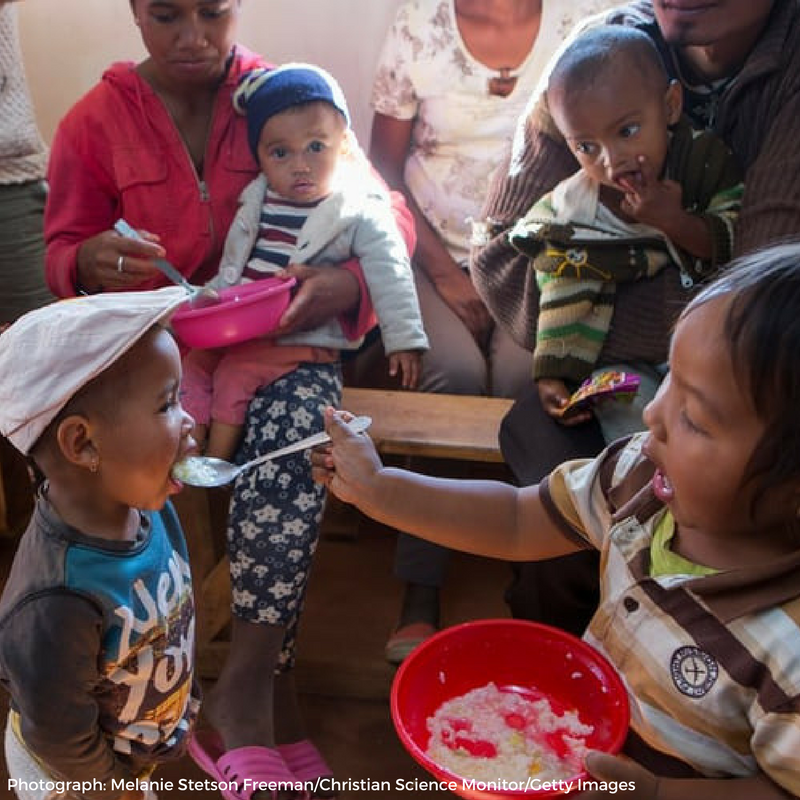Beyond wasted and stunted—a major shift to fight child undernutrition

Published: September 11, 2019
Publication: The Lancet: Child and Adolescent Health
Authors: Prof Jonathan C K Wells, PhD, Prof André Briend, PhD, Erin M Boyd, MSc, Prof James A Berkely, FRCPCH, Andrew Hall, PhD, Sheila Isanaka, ScD, Prof Patrick Webb, PhD, Tanya Khara, MSc, Carmel Dolan, MSc
Read the original article here.

Summary
- Since the 1970s, nutritionists have categorized undernutrition[1] in two major ways, either as wasting or stunting.
- Stunting as an indicator of being too short for one’s age
- Wasting as an indicator of being too thin for one’s height
- Wasting and stunting are proxies, or signs, for the more complicated less obvious physiological effects of malnutrition.
- Though categorizing children as wasted or stunted can be useful in identifying at risk populations, it is problematic to use these categories on individual children because they draw an artificial distinction between these two types of undernutrition
- Because of this distinction, stunting and wasting are often addressed by separate programs/approaches.
- Recently, research has shown that individual children are at risk of having both stunting and wasting simultaneously or of moving back and forth between the two conditions over time.
- Wasting is often described as the result of acute episodes of malnutrition, while stunting is portrayed as the consequence of chronic malnutrition. However, stunting and wasting can co-exist over time, so this nomenclature is incorrect.
- Children who are both stunted and wasted are at a much greater risk of premature death than children who only have one condition.
- The emphasis on classifying children as either stunted or wasted and then treating them with interventions designed to address one or the other of those conditions doesn’t account for the complexity of the causes and interconnectedness of the outcomes of wasting and stunting.
- We need to change the way we understand and manage child undernutrition to acknowledge that individuals can experience both conditions at the same time.
Specifically:
- We need more research on the relationship between weight and height faltering and how the interaction between the two increases a child’s susceptibility to death and long-term disability, including looking at the role a mother’s nutrition plays in her child’s weight and height.
- We need better ways to predict, identify, and monitor children at risk of weight and height faltering, not just those children who currently are wasted or stunted.
- We need to evaluate preventative and therapeutic interventions to ensure that they address the diverse causes and individual biological processes that result in undernutrition.
Key Quote
“We argue that these views [about the distinction between stunting and wasting] have become entrenched, leading to the separation of these outcomes in terms of policy, guidance, programme interventions, and financing: at the individual level, acute and chronic undernutrition are now viewed as separate conditions, and are routinely reported as distinct outcomes among policy makers. What is poorly recognised is that the anthropometric indices used to categorise individual children as wasted and stunted are only superficial proxies for the physiological and functional consequences of the underlying processes of undernutrition.”
Useful Facts
- Globally, 15.9 million children worldwide are experiencing being both wasted and stunted.
- Children who are both wasted and stunted have the same risk of dying as children with the most severe form of wasting.
- Initial research shows that being wasted increases a child’s risk of stunting.
- There is little evidence to support the concern that intensive use of therapeutic foods to treat wasting in stunted children will pre-dispose these children to obesity later in life.
[1] Defined by the WHO as the outcome of insufficient food intake and repeated infectious disease
